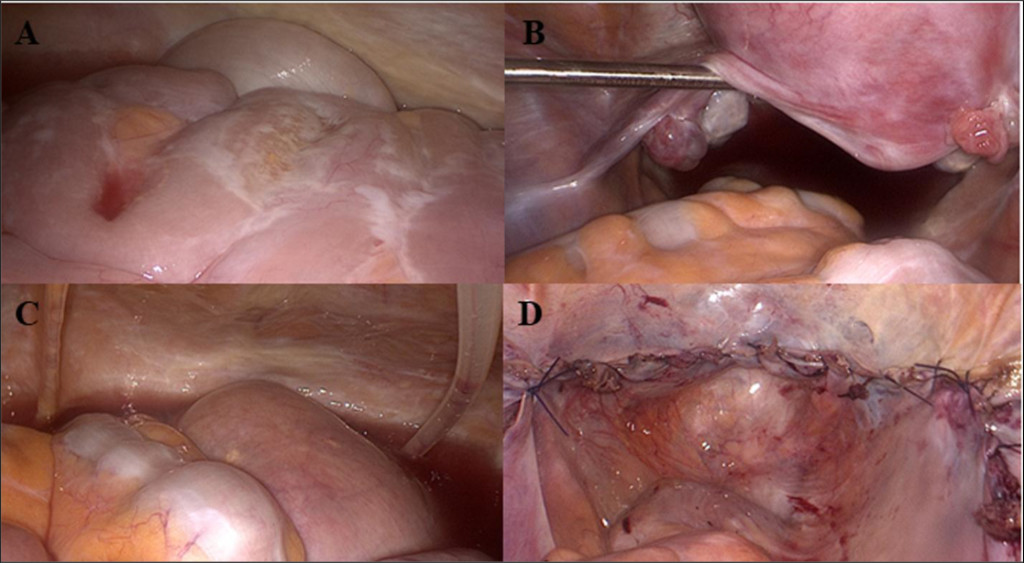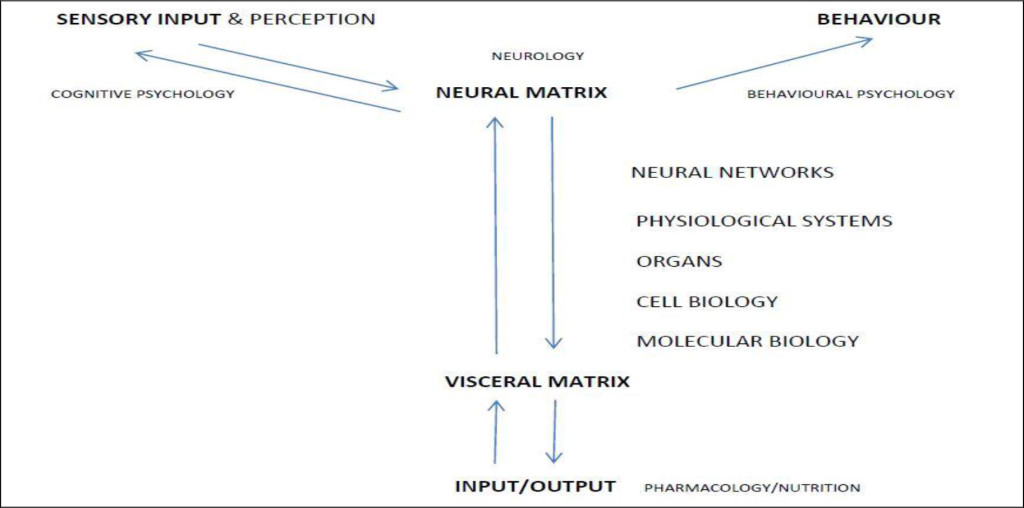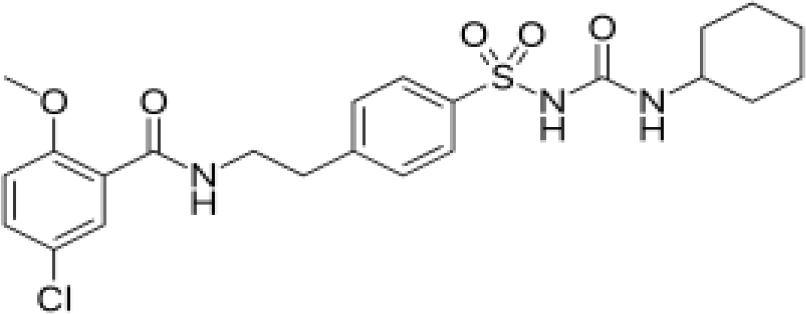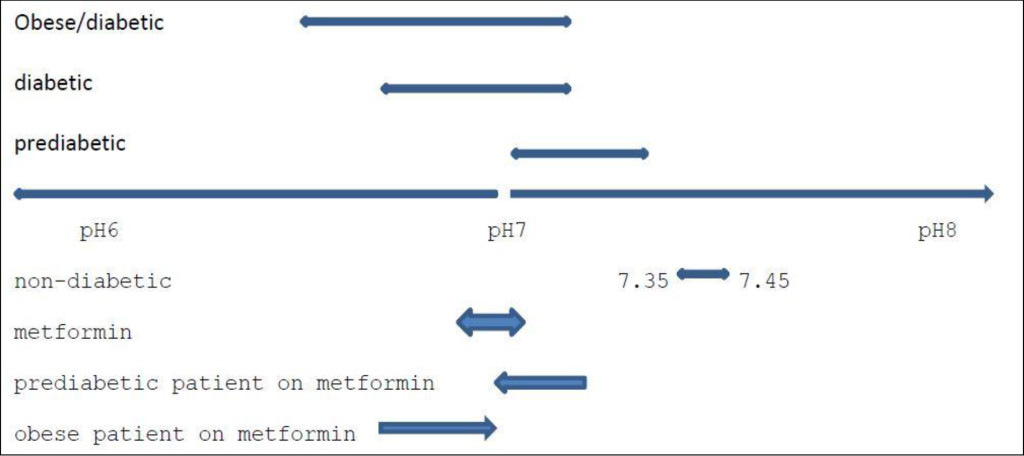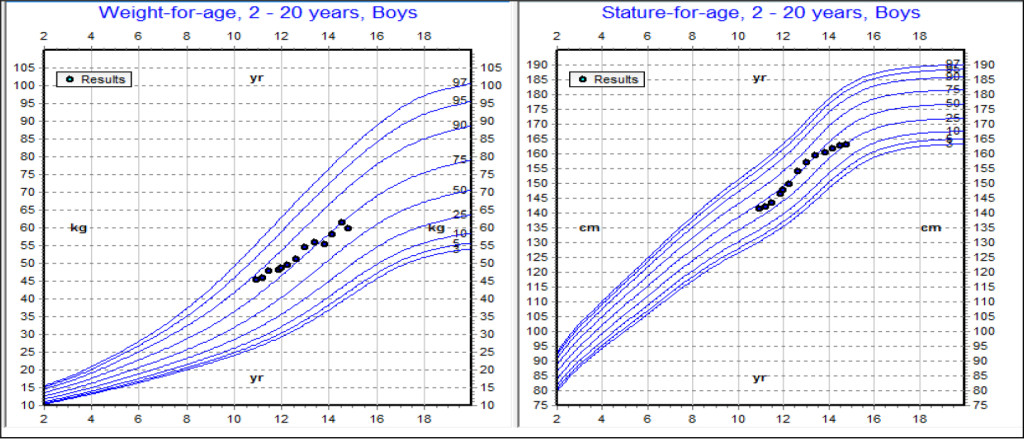Abstract
This article analysed the relationship between social support from family and friends and life satisfaction in transgender people. The participants comprised 110 transgender women and 43 transgender men, who were recruited via associations using the snowball sampling technique. The results show that satisfaction with emotional support from friends, financial help from the family, and income level are predictors of satisfaction with life. The implications of these results are discussed as well as potential future research.
Keywords
Disclosure, Medical and surgical treatment, Social support, Satisfaction with life, Transgender
Studies on social support in other groups have shown that it has a positive effect on a wide variety of health-related issues, from the perception of physical health and functional autonomy [1,2] to its relationship to morbid conditions such as infarction [3]. In contrast, it has been demonstrated that a lack of social support is associated with disorders such as depression, neurosis, and schizophrenia [4–8]. It has also been observed that social networks have an effect on satisfaction with life and psychological wellbeing [9,10]. Several authors have shown that the positive effect of social support on wellbeing is associated with the capacity of social networks to foster resilience and adaptive behaviour [11–14]. Other studies have suggested that social support has a major influence on psychological adjustment in high-stress situations [15–17].
Although social support is a multidimensional construct, researchers typically use measures that do not differentiate between the various types and sources of social support under investigation. However, differences have been found between types of social support [18,19] and between sources of social support [20]. The term transsexual was introduced into the medical literature via the work of David O. Cauldwell, who reported the case of a boy who had been assigned as a girl at birth. Caudwell defined the child’s status as “Psychopathia transsexualis”.
In 1953, [21] the endocrinologist Harry Benjamin defined transsexual people as people who feel unhappy with their assigned sex, which was determined based on their anatomical structures, and who are fully convinced of belonging to the other sex. Transsexuality can affect either men or women. Thus, male transsexuality refers to a person born with the biological sex and attributes of woman but who feels like a man and female transsexuality refers to a person born with the biological sex and attributes of a man but who feels like woman. The term transgender has recently come into use to refer to people who feel they do not fit within the binary concept of sex and gender. Burgess [22] noted that the term transgender is an inclusive term that refers to transvestites, drag kings, drag queens, transsexuals, androgynous people, and so on. In fact the term transgender include people who have a gender identity that differs from their assigned sex.
Within the field of psychology, previous editions of the Diagnostic and Statistical Manual of Mental Disorders (DSM) classified transsexualism as a disorder. Although the current edition of the DSM has replaced the term “gender identity disorder” by “Gender Dysphoria”, gender nonconformity remains classified as a mental disorder [23]. This change in terminology does not address the demands made by sectors against the pathologization of transexuality. Thus, the International Network for Trans Depathologization was created in 2012, which denounced the practice of treating transexuality as a disorder based on mistaking non-normative identities (those outside the dominant cultural order) for pathological identities. In fact, due to the manner in which the DSM conceptualized transsexuality, psychological research has broadly centred on the assessment, etiology, and treatment of individuals with this disorder [24], and thus pathological aspects have been investigated more than collective psychosocial aspects, such as social support or social wellbeing.
Transgender people begin to experience visibility problems at an early age. Transgender youth exhibit atypical gender behaviour that makes them a particularly vulnerable population that faces prejudice and discrimination in areas such as education, employment, and medical care [25–28]. According to several studies the relationship between psychological distress and discrimination is mediated by a lack of social support for one’s same-sex attraction or gender variation [29, 30]. For that matter, Davey, et al. [31] found that individuals with Gender Dysphoria perceived less social support in comparison with the control group (adults who identified themselves as not having Gender Dysphoria or being transgender).
Finally, Wilkerson, et al. [32] found that youth participating in a drop-in program for LGBTQ youth reported improved social support, lower depressive symptomatology and increased self-esteem and coping. The global aim of this research was to examine social support networks and the type of support received, from the perspective of both frequency and satisfaction with support. In this regard, it is important to note that, although some other studies have analysed social support given transgender people, this study analyses this variable taking in account both the frequency of the support received from their social network and their degree of satisfaction with the support received from the sources analysed. We also analysed the relationship between social support and life satisfaction. It was hypothesised that social support from friends and family would be positively associated with the level of satisfaction with life in transsexual people.
Methods
Participants
The study included 153 participants comprisig 110 transgender women and 43 transgender men from Spain. Of these participants, 75.2% were Spanish and 24.8% were mainly from Latin American countries (Brazil, Ecuador, Argentina, etc.). The age of the participants ranged from 15 years to 69 years (mean 35.5 years; SD = 11.7). Most of the participants were single (71.2%), followed by legally partnered (13.1%), married (9.2%), and separated or divorced (6.5%). In total, 59.5% reported not having a partner and 40.5% reported having a partner. A total of 54 (37%) individuals stated that their partnership had lasted between 1 year and 4 years. The socio-economic data showed that the majority of the sample (34.5%) had a monthly income of less than € 600, when taking into account all members of the household including the respondent, whereas 30.4% had an income of more than € 1,200 per month, 23.7% had an income between € 600 and € 1200 per month, and 11.4% did not know or did not answer. The majority of the participants (35.3%) were unemployed, whereas 22.2% were employed with a contract, and 11.1% were employed without a contract. Table 1 shows the employment status of the sample (Table 1).
Table 1. Employment status in percentages.
|
Percentage |
|
|
Professional situation |
|
|
Unemployed |
35.3 |
|
Studying |
9.2 |
|
Working with a contract |
22.2 |
|
Working without a contract |
11.1 |
|
Self-employed with employees |
3.3 |
|
Self-employed without employees |
3.3 |
|
Homemaker or caregiver without remuneration |
1.3 |
|
Retired with contributory pension |
3.3 |
|
Retired with non-contributory pension |
4.6 |
|
Retired with other financial help |
0.7 |
|
Retired without pension or financial help |
2.0 |
|
Other situations |
3.9 |
Instruments
The questionnaire comprised the following dimensions:
Sociodemographic characteristics
These included age, nationality, educational level, household, income, and employment status.
Awareness, visibility, and treatment
A set of ad hoc questions addressed the following issues: becoming aware of transgender (e.g., At what age did you become aware of being transgender?); visibility (At what age did you come out about your transgender identity?, Who did you first tell about your transgender identity?, Did you come out while you were still in education?; the workplace (Did work colleagues know you were transsexual?); and medical and surgical treatment (Have you undergone hormone therapy?, Have you undergone surgical treatment?, Have you undergone genital reconstruction surgery?).
Social support
Social support was measured using the Frequency of and Satisfaction with Social Support Questionnaire [33]. This questionnaire assesses the frequency of contact with the social network, the degree of satisfaction with this relationship, and the type of support provided by the network. The present study analysed family and friendships as the sources of support. Emotional support and financial support were analysed in terms of frequency (e.g., How often do you receive emotional or financial support from family or friends?) and satisfaction (e.g., How satisfied are you with the emotional or financial support provided by family or friends?). Each item is rated on a 1–5 scale, where 1 = none/dissatisfied and 5 = a lot/very satisfied. Cronbach’s alpha coefficient was 0.80 for the questionnaire. A multiple-choice question was included on the person who had provided the most social support (Who has provided you with the most support regarding your transgender identity?).
Satisfaction with life
This dimension was measured using the Satisfaction with Life Scale [34]. This instrument comprises 5 items that provide a global measure of satisfaction with life. Each item is rated on a 1–7 scale, where 1 = “strongly disagree” and 7 = “strongly agree”. The questionnaire had a good reliability index (α = 0.84). The SWLS provides a score for each item and a global score based on the cut off points suggested by Diener. Table 3 shows the means and standard deviations of the items of the SWLS.
Procedure
A cross-sectional design was followed using questionnaires administered to participants throughout Spain. Participants were recruited via the Spanish Federation of Lesbians, Gays, Transsexuals, and Bisexuals (FELGTB), which contacted associations that work with trans people. The snowball sampling technique was used, in which the people who are originally contacted nominate other people who might be included in the sample. Participation was voluntary and anonymous.
Results
Becoming aware of trans and coming out
The participants became aware of their trans identity at a mean age of 10.8 years (SD = 7.61). In contrast, they came out for the first time at a mean age of 18.8 years (SD = 9.10).
The first person they told was a member of the family (40.9%;
n = 60), followed by a male homosexual friend (18.8%), then a female heterosexual friend (10.1%). The remaining percentages were divided between a female trans friend, a male heterosexual friend, a male trans friend, and other individuals.
Within families, the first person they told was the mother (48.3%) followed by a sister (13.3%), father and mother (10%), grandmother (6.7%), female cousin (6.7%), the family itself (5%), father (3.3%), and others (6.7%).
Treatment
It should be noted that the treatment of trans people via the public health system is not regulated at a national level in Spain; rather, each Spanish Autonomous Community decides whether such treatment forms part of the service they provide. In addition, Esteva de Antonio et al. [35] have noted that there is no standardised protocol for the treatment of trans people in Spain. Genital reconstruction surgery is only available in four of the 17 Spanish Autonomous Communities.
Hormone treatment
Most of the respondents (86.9%) had undergone hormone treatment, whereas 11.8% had not, and 1.3% did not reply. In total, 133 participants replied to the question on where hormone treatment was administered; of these, 89.5% chose their place of residence and 10.5% chose another city.
Surgical treatment
There was little difference in the percentages of respondents who had or had not undergone surgical treatment: 55.6% had undergone surgery, 42.5% had not, and 2% did not reply. In total, 85 participants responded to the question on the place of surgical treatment; of these, 63.5% chose their place of residence and 36.5% chose another place.
Genital reconstruction surgery
In total, 83% of the participants reported not having undergone genital reconstruction surgery, whereas 15% had, and 2% did not reply. In total, 23 participants replied to the question on the place where genital reconstruction surgery was performed; of these, 56.5% chose their place of residence and 43.5% chose a different place or city.
Social support
Main source of support
The participants could choose from one or more options regarding the main source of support. Thus, the family (39.2%) was the main source of support followed by friends (24.9%), partner (11.1%), family and partner (9.8%), family and friends (7.1%), partner and friends (2%), LGTB association (2%), and did not reply/did not know (3.9%).
Types and sources of support
This study analysed family and friends as the sources of support because these two groups provide the highest level of support. Emotional and financial support were assessed in relation to trans people. (Table 2) shows the means and standard deviations of the sources and types of support.
Table 2. Means and standard deviations of the sources and types of support (Frequency and Satisfaction).
|
Frequency |
Satisfaction |
||
|
Emotional support |
Family |
3.42 (SD = 1.47) |
3.33 (SD = 1.54) |
|
Friends |
3.93 (SD = 1.23) |
3.76 (SD = 1.20) |
|
|
Financial support |
Family |
2.43 (SD = 1.56) |
2.96 (SD = 1.50) |
|
Friends |
1.90 (SD = 1.15) |
2.68 (SD = 1.25) |
The Student test was used to compare means. Significant differences were found in the frequency of emotional support, with friends being the main source (t (147) = 3,497; p <.005). Significant differences were also found in satisfaction with emotional support; friends were also the main source of satisfaction (t (142) = 2,871, p <.005).
Significant differences were found in the frequency of financial support, the family being the most frequent source of this type of support (t (144) = 3.531, p <.005). No differences were found between family and friends in satisfaction with financial support (t (137) = 1.786, p = 0.076).
Satisfaction with life
Pavot and Diener [36] proposed a group of criteria to classify people according to their score on the SWLS: 30–35 (very satisfied); 25–29 (satisfied); 20–24 (slightly satisfied); 15–19 (slightly dissatisfied); 10–14 (dissatisfied); and 5–9 (very dissatisfied).
The mean global score was 19.44 (SD = 8.34). Based on the recommended cut off points, the participants reported small but significant problems in several areas of their lives. Attention should be drawn to the last item (If I could live my life over, I would change almost nothing); 53.7% of participants disagreed or strongly disagreed with this statement. Table 3 shows the means and standard deviations of the items of the SWLS (Table 3).
The SWLS used by permission of Diener at al [34]. Participants who had undergone genital reconstruction surgery had a mean score of 23.13 (SD = 8.60) in satisfaction with life versus a mean of 18.75 (SD = 8.09) among those who had not undergone surgery. The chi-squared test showed that there was a significant association between undergoing genital reconstruction surgery and level of satisfaction with life: chi-squared test (1, N = 150) = 72,107, p < 0.000.
Table 3. Means and standard deviations of the SWLS.
|
Mean |
SD |
|
|
Item 1. In most ways my life is close to my ideal |
3.95 |
2.17 |
|
Item 2. The conditions of my life are excellent |
3.82 |
1.96 |
|
Item 3. I am satisfied with my life |
4.39 |
2.08 |
|
Item 4. So far I have gotten the important things I want in life |
4.48 |
2.03 |
|
Item 5. If I could live my life over, I would change almost nothing |
2.99 |
2.23 |
Relationship between social support and satisfaction with life
Linear correlation analysis was conducted to determine the association between social support variables and level of satisfaction with life. Significant correlations were found between emotional and financial support from the family in both dimensions (frequency and satisfaction) and satisfaction with life. Significant correlations were also found between emotional support from friends in both dimensions (frequency and satisfaction) and satisfaction with life. However, a significant correlation was only found between satisfaction with financial support from friends and satisfaction with life, but not between frequency of frequency of financial support and satisfaction with life. (Table 4) shows the correlations between the two variables.
Table 4. Correlation between different dimensions of social support and satisfaction with life.
|
Types of support |
Satisfaction with life |
|
Family |
|
|
Emotional support (frequency) |
.350* |
|
Emotional support (satisfaction) |
.350* |
|
Financial support (frequency) |
.318* |
|
Financial support (satisfaction) |
.461* |
|
Friends |
|
|
Emotional support (frequency) |
.328* |
|
Emotional support (satisfaction) |
.337* |
|
Financial support (frequency) |
.111 |
|
Financial support (satisfaction) |
.235** |
|
*≤.001; **≤.005 |
Finally, stepwise linear regression was conducted to determine the variables that predicted satisfaction with life using the participants’ total score on the SWLS as the criterion variable. As predictor variables, sociodemographic variables (age and level of monthly income) were entered in the first step and social support variables (frequency of and satisfaction with each type of support) were entered in the second step for each of the sources of support analysed (R² = .34, F (126, 4) = 16.32, p <0.001). The analysis of the results showed that the main variables that predicted satisfaction with life were satisfaction with emotional support from friends, satisfaction with financial support from the family, level of monthly income, and frequency of emotional support from the family. (Table 5) shows the relative weights of each of the predictor variables.
Table 5. Stepwise linear regression between predictor variables and satisfaction with life.
|
B |
SD |
Beta |
t |
Sig. |
|
|
Age |
.107 |
1.453 |
.149 |
||
|
Monthly income |
.466 |
.208 |
.163 |
2.242 |
.027 |
|
Family |
|||||
|
Emotional support (frequency) |
1.212 |
.544 |
.210 |
2.229 |
.028 |
|
Emotional support (satisfaction) |
–.053 |
–.322 |
.748 |
||
|
Financial support (frequency) |
–.033 |
–.316 |
.752 |
||
|
Financial support (satisfaction) |
1.501 |
.545 |
.266 |
2.756 |
.007 |
|
Friends |
|||||
|
Emotional support (frequency) |
.112 |
1.073 |
.285 |
||
|
Emotional support (satisfaction) |
1.821 |
.534 |
.255 |
3.409 |
.001 |
|
Financial support (frequency) |
–.024 |
–.305 |
.761 |
||
|
Financial support (satisfaction) |
.025 |
.290 |
.772 |
||
Discussion
The following conclusions are suggested, taking into account of the aims and hypothesis of the study.
Personal and social characteristics
Regarding socioeconomic data, the financial precariousness of the participants is indicated by the fact that 34.5% had a monthly income of less than € 600, which was clearly due to the high level of unemployment among them (35.3%). Positive discrimination actions are needed to integrate transgender people in the workplace.
Regarding sexual identity, the mean age at which the participants were aware of their trans identity was 10.8 years, which coincides with the onset of puberty (between 10 years and 12 years). In fact, puberty is a developmental period that is associated with high levels of gender dissatisfaction among many young transgender, particularly because this is the time when the first signs of sexual maturity begin to emerge [25]. However, the participants came out to other people when they were much older. This could indicate the difficulties that trans-gender people perceive when there is a discrepancy between the sex assigned them at birth and their gender identity. In this regard, several authors have suggested that adolescents who identify as trans or who feel they do not fit within the binary gender system are particularly susceptible to experiencing negative life situations, such as becoming homeless, being victimized, and experiencing stigmatization or rejection [27, 37, 38]. For these reasons, school should also become a setting of both awareness and support, which would involve the development of specific training for teachers.
Regarding treatments for the physical aspect of sexual identity, the majority of the participants had undergone hormone therapy or surgical treatment. However, fewer had undergone surgical treatment than those who had undergone hormone therapy. Finally, only 15% had undergone sex reassignment surgery. The high percentages of participants who had undergone hormone therapy and surgical treatment could be an indication of the importance they place on the social presentation of their actual identity, whereas the small percentage of participants who had undergone genital reconstruction may have been due to the following reasons, among others: this treatment has limited availability in Spain; fears of unsatisfactory outcomes; the perception that this type of operation is unnecessary to feel completely fulfilled; and emotional burnout due to a therapeutic journey that has gone on for too long. Despite the foregoing, the results show that the participants who had undergone genital reconstruction surgery had a higher level of satisfaction with life. Further research is needed to clarify the reasons for their greater satisfaction and to follow-up people who have undergone genital reconstruction to know how they are progressing.
Social support and satisfaction with life
Family and friends were the main sources of social support. Significant differences were found between the two sources of emotional and financial support: friends provided more emotional support and generated higher levels of satisfaction. A possible explanation for these results is that trans identity may be more accepted by friends than by family, particularly if it is taken into account that the network of friends is freely chosen. The relative lack of emotional support from the family suggests the need to work with families in order to increase this particular aspect of support. Community psychology offers a range of resources to transform oppressive and unjust situations through the participation of community members (social support and self-help groups, the creation of spaces for community and political participation, etc).
The family was the main source of financial support, although no significant differences were found between family and friends in the level of satisfaction with this type of support. This is noteworthy because although the family provided more financial support than friends, no significant differences were found between family and friends in the level of satisfaction with this type of support. Factor and Rothblum [24] compared transgender people (transgender men, transgender women, and genderqueers) to nontransgender brothers and sisters, and found that the transgender group perceived less social support from the family. Studies on homosexual people have also shown that they receive more social support from friends than from the family [9, 39–42]. A possible explanation for this finding may involve the “connection” dimension proposed by Tardy [43], who suggested that the effectiveness of a specific type of support in many cases depends on its source.
Taking into account the cut off points established by Pavot and Diener [36], the global score on satisfaction with life was slightly less than the average score. This finding is understandable if it is taken into account that, from the moment trans people first come out, they face many problems and challenges in a range of environments that include education, family, workplace, and healthcare. In this regard, Clements-Nolle, Mark and Katz [44] conducted a study in San Francisco that included 392 trans women and 123 trans men and demonstrated a prevalence of 32% in attempted suicide, where depression, gender discrimination, and victimization were the variables associated with the attempt.
Finally, the variable satisfaction with life was associated with social support. The trans group experienced greater satisfaction with life the greater the frequency of and satisfaction with the emotional and financial support provided by the family. Satisfaction with life is also increased by an increase in the frequency of and satisfaction with the emotional support provided by friends. Satisfaction with financial support from friends was associated with satisfaction with life. However, the results of the regression analysis show that the main variables associated with satisfaction with life were emotional support from friends, financial support from the family, and income level. These results may be related to the financial precariousness experienced by most of the trans group, who receive financial support from the family, although emotional support from friends is considered more important. In addition, the results on instrumental support from the family show that the frequency of support does not always coincide with satisfaction with support; rather, satisfaction depends on the social network itself as well as the quality of the relationship with the sources of support [45].
These results are relevant because they are indicative of the situation of trans people in Spain. In addition, they show that increased social support from friends and family leads to greater satisfaction with life. Although most families experience some kind of conflict and crisis by having a transgender child [46,47], an effective intervention with the family can significantly reduce distress among trans people, who often feel misunderstood or rejected by their relatives.
Clearly, it remains important to continue research on this group; as Carroll, Gilroy, and Ryan [48] have pointed out, there are few studies that have reliably analysed the characteristics and experiences of transgender people. Future research should investigate different clinical treatments and to what extent these are associated with satisfaction with life and the mediating role of social support. This study was conducted in Spain, and thus studies in other countries are needed in order to be able to generalise the results to other social and cultural contexts.
Moreover, even though no significant differences were found between native and non-native trans, it would be of interest to investigate this aspect using a larger sample. Studies such as that conducted by Chavez [49] in Southern Arizona have shown that LGBTQ immigrants encounter many problems due to economic and legal restrictions.
Finally, it is especially important to consider the variable social support from the viewpoint of intervention in order to develop actions that will improve the level of support by strengthening social networks. We would like to thank the FELGTB and particularly Ms. Mar Cambrollé Jurado (President of the Sylvia-Ribera Association of Andalusian Transsexuals) for their help and trust in the research team.
References
- Angel JL, Angel RJ (1992) Age at migration, social connections, and wellbeing among elderly Hispanics. Journal of Aging and Health 4: 480–499.
- Sasao T, y Chun CA (1994) After the Sa-i-gu (April 29) Los Angeles Riots: correlates of subjective well-being in the Korean-American Community. Journal of Community Psychology 22: 136–152.
- Rodríguez-Artalejo F, Guallar-Castillón P, Herrera MC, Otero CM, Chiva MO, et al. (2006) Social network as a predictor of hospital readmission and mortality among older patients with heart failure. J Card Fail 12: 621–627. [crossref]
- Gottlieb BH (1983) Social support strategies: Guidelines for mental health practice. Beverly Hills, Sage Publications, USA
- Lakey B, Cronin A (2008) Low social support and major depression: Research, theory and methodological issues. In K. S. Dobson & D. J. A. Dozois (Eds.), Risk factors in depression (pp. 385–408). San Diego, CA, US: Elsevier Academic Press.
- Pore V, Heikkilä M, Ritala M, Leskelä M, Areva S (2006) Atomic layer deposition of TiO2-xNx thin films for photocatalytic applications. Journal of Photochemistry and Photobiology, A: Chemistry 177: 68–75.
- Nezlek JB, Hampton CP, Shean GD (2000) Clinical depression and day-to-day social interaction in a community sample. J Abnorm Psychol 109: 11–19. [crossref]
- Pattison EM, Defrancisco D, Wood P, Frazier H, Crowder J (1975) A psychosocial kinship model for family therapy. Am J Psychiatry 132: 1246–1251. [crossref]
- Domínguez-Fuentes JM, Hombrados-Mendieta MI, García-Leiva P (2012) Social support and life satisfaction among gay men in Spain. Journal of Homosexuality 59: 241–255.
- Gottlieb BH (1981) Social networks and social support in community mental health. In: BH Gottlieb (ed.). Social networks and social support. Sage London.
- Brito RC, Koller SH (1999) Human development and social and affective support networks. In: A. M. A. Carvalho (ed.). The social world of the child: nature and culture in action. São Paulo: House of the Psychologis.
- Garmezy N, Masten AS (1994) Chronic adversities. In: M. Rutter, E. Taylor y L. Hersov (eds.). Child and adolescent psychiatry: modern approaches. London: Blackwell.
- Rodríguez E, Lanborena N, Errami M, Rodríguez A, Pereda C, et al. (2009) Relationship between migrant status and social support and quality of life in Moroccans in the Basque Country (Spain). Gaceta Sanitaria, 23: 29–37.
- Rutter M (1987) Parental mental disorder as a psychiatric risk factor. In: Hales R., Frances A. (eds). American Psychiatric Association annual review. (6thVol), American Psychiatric Press, Inc.; Washington, DC.
- Cohen S, Wills TA (1985) Stress, social support and the buffering hypothesis. Psychological Bulletin 98: 310–357.
- Simons C, Aysan F, Thompson D, Hamarat E, Steele D (2002) Coping resource availability and level of perceived stress as predicators of life satisfaction in a cohort of Turkish college students. College Student Journal, 36, 129–141.
- Rees T, Freeman P (2007) The effects of perceived and received support on self-confidence. J Sports Sci 25: 1057–1065. [crossref]
- Cheng C (1998) Getting the right kind of support: functional differences in the types of social support on depression for Chinese adolescents. Journal of Clinical Psychology 54: 845–849.
- Demaray M K, Malecki K (2003) Perceptions of the Frequency and Importance of Social Support by Students Classified as Victims, Bullies, and Bully/Victims in an Urban Middle School. School Psychology Review 32: 471–489.
- Clark-Lempers DS, Lempers JD, Ho C (1991) Early, middle, and late adolescents’ perceptions of their relationships with significant others. Journal of Adolescent Research, 6: 296–315.
- Benjamin H (1953) Transvestism and transsexualism. International Journal of Sexology 153: 391–396.
- Burgess C (1999) Internal and external stress factors associated with the identity development of transgendered youth. In: G.P. Mallon (ed.). Social services with transgendered youth. Harrington Park Press, Binghamton, NY, USA.
- American Psychiatric Association (2013) Diagnostic and statistical manual of mental disorders. (5thedn), American Psychiatric Association, Washington, DC, USA.
- Factor RJ, Rothblum ED (2007) A study if transgender adults and their non-transgender siblings on demographic characteristics, social support, and experiences of violence. Journal of LGBT Health Research 3: 11–30.
- Grossman AH, D’Augelli AR (2006) Transgender youth: invisible and vulnerable. J Homosex 51: 111–128. [crossref]
- Lombardi E (2001) Enhancing transgender health care. Am J Public Health 91: 869–872. [crossref]
- Mallon GP (1999) Knowledge for practice with transgendered persons. Journal of Gay and Lesbian Social Services 10: 1–18.
- Ryan C, Futterman D (1997) Lesbian and gay youth: Care and counseling. Adolescent Medicine: State of the Art Reviews 8: 207–374.
- Hatzenbuehler ML, Dovidio JF, Nolen-Hoeksema S, Phills CE (2009) An Implicit Measure of Anti-Gay Attitudes: Prospective Associations with Emotion Regulation Strategies and Psychological Distress. J Exp Soc Psychol 45: 1316–1320. [crossref]
- Hatzenbuehler ML, McLaughlin KA, Xuan Z (2012) Social Networks and Risk for Depressive Symptoms in a National Sample of Sexual Minority Youth. Social Science & Medicine 75: 1184–1191.
- Davey A, Bouman WP, Arcelus J, Meyer C (2014) Social support and psychological well-being in gender dysphoria: A comparison of patients with matched controls. The Journal of Sexual Medicine 11: 2976–2985.
- Wilkerson JM, Schick VR, Romijnders KA, Bauldry J, Butame SA (2016) Social support, depression, self-esteem, and coping among LGBTQ adolescents participating in Hatch Youth. Health Promotion Practice 17: 1–8.
- Hombrados-Mendieta MI, Gómez-Jacinto L, Domínguez-Fuentes JM, García-Leiva P, Castro-Travé M (2012) Types of Social Support Provided by Parents, Teachers and Classmates During Adolescence. Journal of Community Psychology 40: 645–664.
- Diener E, Emmons RA, Larsen RJ, Griffin S (1985) The Satisfaction With Life Scale. J Pers Assess 49: 71–75. [crossref]
- Esteva de Antonio I, Gómez-Gil E, Almaraz MC, Martínez-Tudela J, Bergero T, et al. (2012) Organización de la asistencia a la transexualidad en el sistema sanitario público español. Gaceta Sanitaria 26: 203–209.
- Pavot W, Diener E (1993) Review of the Satisfaction with Life Scale. Psychological Assessment 5: 164–172.
- Israel GE, Tarver DE (1997) Transgender Care: Recommended Guidelines, Practical Information, and Personal Accounts. Temple University Press, Philadelphia, USA.
- Rosenberg M (2002) Children with gender identity issues and their parents in individual and group treatment. Journal of the American Academy of Child and Adolescent Psyquiatry 41: 619–621.
- Berguer RM, Mallon D (1993) Social support networks of gay men. Journal of Sociology and Social Welfare 20: 155–174.
- Detrie PM, Lease SH (2007) The relation of social support, connectedness, and collective self-esteem to the psychological well-being of lesbian, gay, and bisexual youth. J Homosex 53: 173–199. [crossref]
- Kurdek LA (1988) Perceived social support in gays and lesbians in cohabitating relationships. Journal of Personality and Social Psychology 54: 504–509.
- Kurdek LA, Schmitt JP (1987) Perceived emotional support from family and friends in members of homosexual, married, and heterosexual cohabiting couples. Journal of Homosexuality 14: 57–68.
- Tardy CH (1985) Social support measurement. American Journal of Community Psychology 13: 187–202.
- Clements-Nolle K, Marx R, Katz M (2006) Attempted suicide among transgender persons: The influence of gender-based discrimination and victimization. Journal of Homosexuality 51: 53–69.
- Cohen S, Syme SL (1985) Issues in the study and application of social support. In: S. Cohen & L. Syme (eds.). Social support and health. Academic Press, San Francisco Pg No: 3–22.
- Borhek MW (1994) Coming Out to Parents: A Two-way Survival Guide for Lesbians and Gay Men and Their Parents. (2nd edn), Pilgrim press, New York, USA.
- Morrow DF (2000) Coming out to families: Guidelines for intervention with gay and lesbian clients. Journal of Family Social Work 5: 53–66.
- Carroll LC, Gilroy PJ, Ryan J (2002) Counselling transgendered, transsexual, and gender-variant clients. Journal of Counselling & Development 80: 131–139.
- Chavez KR (2011) Identifying the needs of LGBTQ immigrants and refugees in Southern Arizona. J Homosex 58: 189–218. [crossref]
